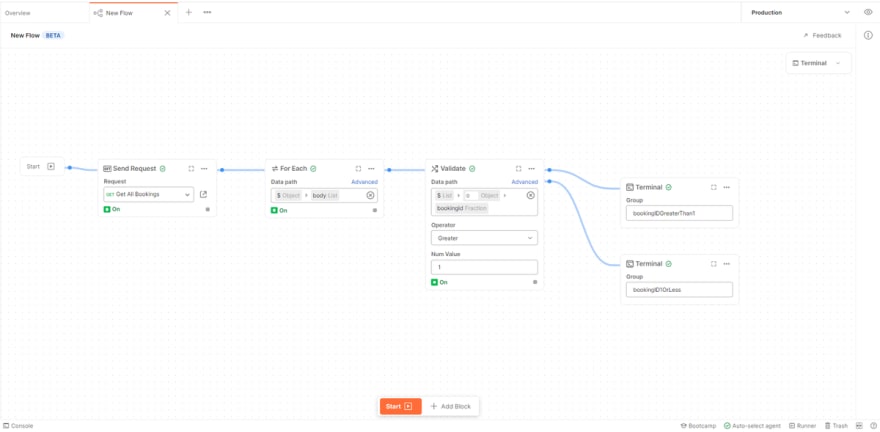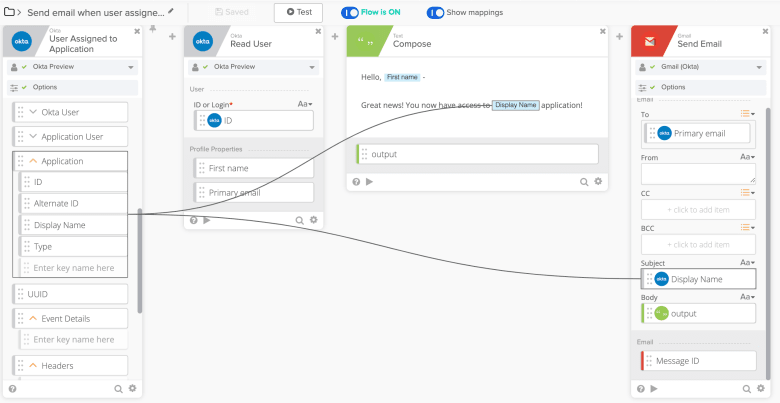I want to share notes and thoughts on no-code developments in the second half of 2021.
One trend that I saw (not a fan of the word trend, but hey) that established and new companies launching no-code workflow-based products and solutions in 2021.
Slack launched a solution to make it easier to build workflows with building blocks. Postman launched Flows solution. Flows is a no-code solution to help chain API calls together. A number of new startups launched no-code workflow-based solutions. You can see some of the statues in the tweets below. There are probably many more companies so this is just a (very) short list.
 ❤️ this. Another company raised money to build workflows #NoCode #workflow
❤️ this. Another company raised money to build workflows #NoCode #workflow
Torq raises $50M Series B for its no-code security automation platform tcrn.ch/3ECX70b18:37 PM - 08 Dec 2021
 Slack wants to make it easier to build workflows with developer building blocks tcrn.ch/3qNsOjv via @techcrunch16:29 PM - 03 Dec 2021
Slack wants to make it easier to build workflows with developer building blocks tcrn.ch/3qNsOjv via @techcrunch16:29 PM - 03 Dec 2021
Formstack raises $425M for a no-code platform that helps businesses automate their customer and internal workflows | TechCrunch buff.ly/3HwdoGb00:20 AM - 19 Nov 2021
 Another #workflows #nocode startup⚡️⚡️⚡️. This space is 🚀
Another #workflows #nocode startup⚡️⚡️⚡️. This space is 🚀
Cascade Labs raises $5.3M for its no-code data automation platform19:23 PM - 11 Jan 2022
 19:26 PM - 11 Jan 2022
19:26 PM - 11 Jan 2022
Now, of course workflow-based solutions are not new. One of the most well known is Zapier. Other players include Tray.io, Integromat and Parabola. I have used Parabola in many posts on this blog. I took a code-based example and trying to build the same application with no-code (in Parabola). You can see some examples:
- Building a no-code app to send daily Covid-19 data
- Tutorial: building a no-code application to text positive news with Parabola, News API, Watson NLU and Twilio
- How To Build a Twitter Bot With Google Sheets, Parabola, and Zapier No-Code Tools
Weblfow, a major player in the no-code web development space hosted its NoCode Conf conference in November. At the conference they announced Webflow Logic. Logic allows to visually create custom, logic-based workflows and automations.
Before many people who used Webflow leveraged Parabola, Integromat, and Zapier (and other tools) to build workflow automations. Now that Webflow is introducing Logic, it will be interesting to see how that will impact current players. Logic is not yet generally available, and it’s not yet clear what capability it will have compared to the existing solutions. My guess, at start they won’t have everything but over time they will build more and more functionality and will make it more challenging for some of the existing solutions.
For many folks it will be “…why do I need to use a 3rd party solutions when I can get almost everything out-of-the-box from Webflow?”. Of course I can also be completely wrong. Existing companies can still provide value as many are more horizontal (cover more use cases, have more integrations) and they can also focus on niche areas.
Parabola is one of my favorite automations tools. Parabola connects with many 3rd party services and provides a tight integration with Shopify. Parabola even has Shopify in their main web site navigation menu:
The Shopify integration is an example of a specific focus area.
With so many companies adding workflow capabilities, I can see Shopify acquiring Parabola and integrating it into its platform. Very similar to how Weblfow has Logic, Shopify will have a workflow solution based on Parabola. In addition to building a complete store (with no-code), store owners will be able to add a no-code workflow automations. For example:
[When this happens to inventory] ➡ [notify these channels] ➡[and do this]
Now, you can do this today I believe but having its own platform will allow even tighter integration and provide competitive advantage.
When you write code, every line is a (small) step and a program becomes a sequence of connected steps. This is also a definition of a workflow. According to Microsoft Wiki:
A workflow consists of a sequence of connected steps.
A workflow is a sequence of steps. When you make it a no-code workflow, instead of writing actual code, you build the flow using visual blocks, connect them in a particular sequence and pass data between them.
I believe there is a connection why many companies have or are introducing workflow-based no-code solutions. It’s the same thing as writing code, but you do it visually. It’s a higher abstraction level but the result is the same. The visual, no-code approach allows a lot more people to use these tools (workflows) to build solutions they need, and a lot faster. They don’t need to ask the IT to do it anymore.
For example, the screenshot below shows a no-code workflow to notify a user when a new application is assigned to them. Many people who are not developers can build this flow quickly as there is no code, only visual blocks that you connect to each other.
Watch a video that shows how to send an email when a new application is assigned to a user:
To demonstrate that a workflow is a high abstraction of code, I took a code-based sample that sends an SMS message using Twilio and built the same in Okta Workflows. I understand it’s a simple example. Here is a 3-minute video of that:
Another interesting development was Airtable introducing Interface Designer. Many companies are using Airtable as a backend or database for applications. Airtable was missing a way to create a web-like UI for the data it was storing. One company that entered that exact space is Softr. According to Softr, “…it allows to turn Airtable data into a beautiful and powerful website, web app or client portal”.
We will need to see how Airtable’s Interface Designer will impact Softr’s direction. Right now Softr has a lot more capabilites and features. I also believe that it’s only a matter of time until Airtable adds more features to its designer. I see a lot of similarities here: Webflow Logic and Airtable Interface Designer.
We will see what happens in the future. The no-code space is big (and growing), there should be room for many companies, even if they have similar solutions/products.















Top comments (0)